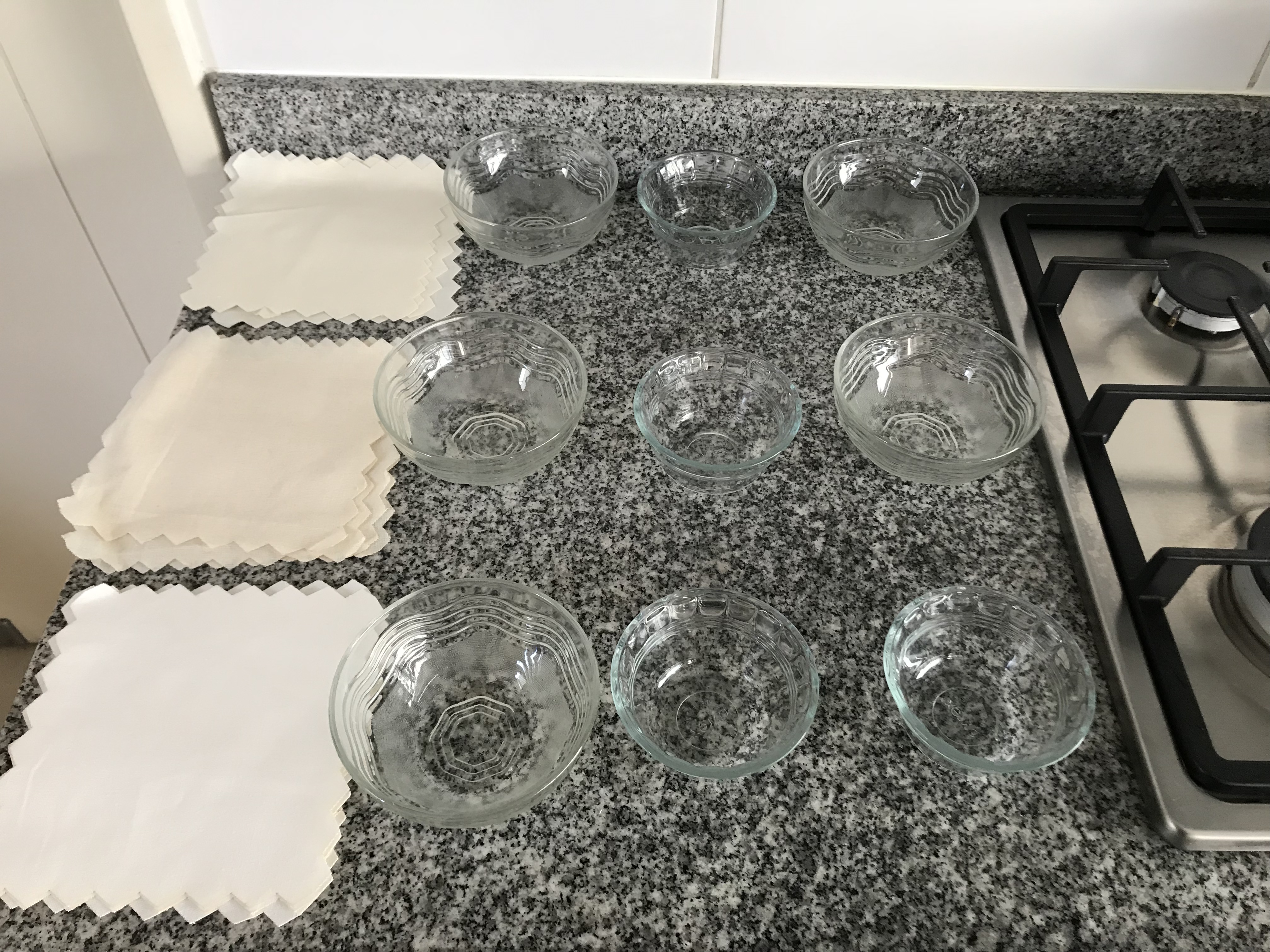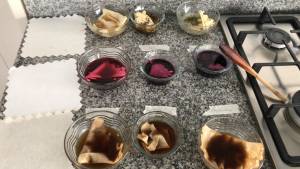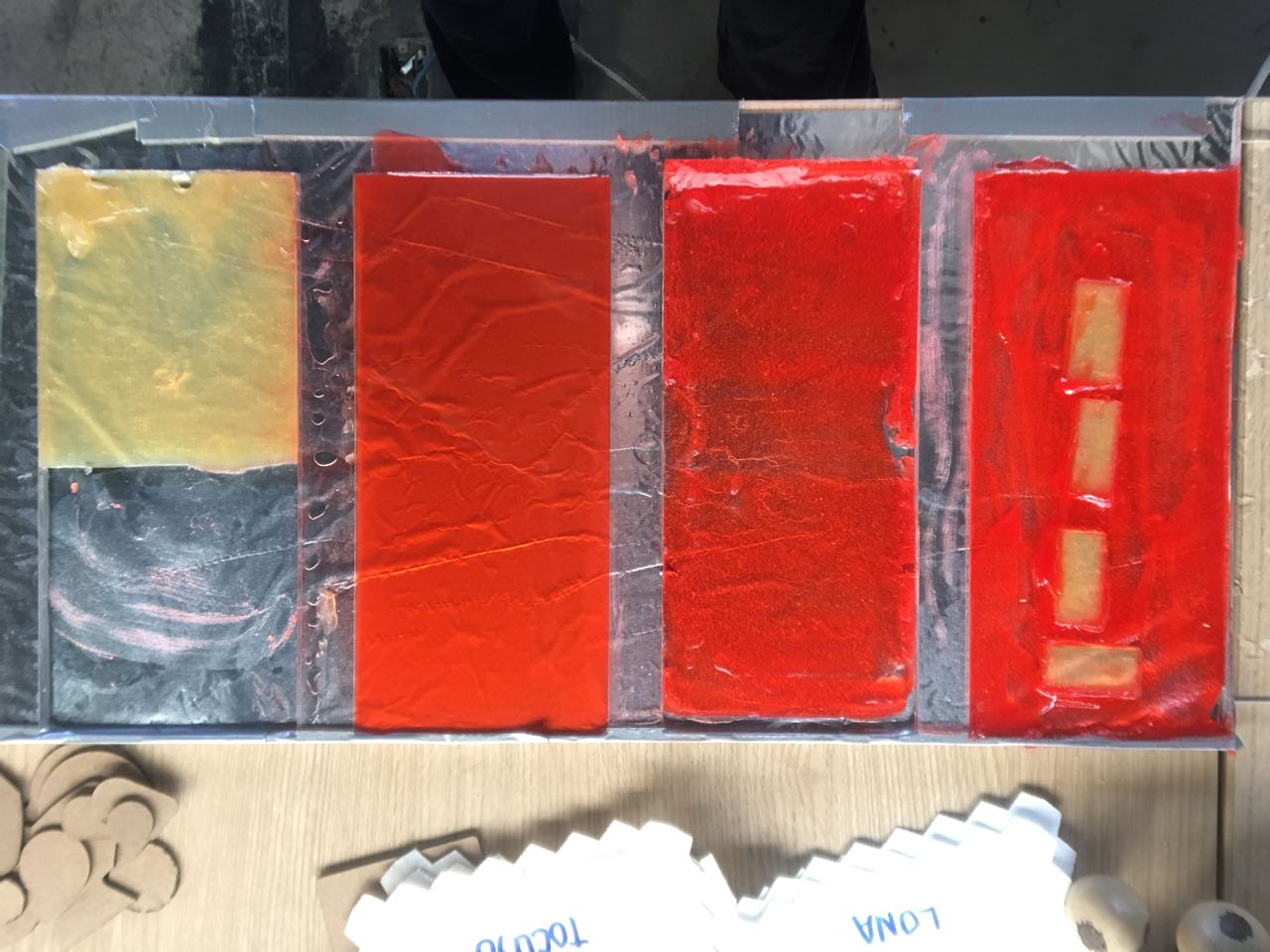Biodyes and Biofabrics
This week's assignment was to experiment with one type of natural dye, and one type of biofabric. I worked on my own for the bio-dyeing part of the assignment, but I worked together with Eldy, Ale, and Luis in order to generate the bioplastic.
Biodyes
A couple of months ago I traveled to Chincheros, a small village within Cusco, where I learned about long lost textile manufacturing techniques. Among these techniques was the process of natural dyeing textiles, using plants, seeds, and even animals. Furthermore, in order to obtain the necessary resources for natural dyeing, some people had to walk up to 4 hours a day. I wanted to experiment with these techniques, so I chose to use 3 different materials:
- Muña Tea
- Purple Chicha (I wanted to use purple corn, but I didn't have any)
- Vilcabamba Coffee
I also used alum, so as to accelerate the process of bio-dyeing. Deciding to venture even more into the world of natural dyes, I chose to use modifiers. I did not have access to chemicals, so I used lemon use to create an acidic modifier and soap to create an alkaline modifier.
The muña turned everything yellow, however, when mixed with lemon juice, a more intense color was obtained, and when mixed with detergent, the shade turned greener.
Coffee turned everything brown, and the color did not seem to be affected by the use of modifiers.

The purple chicha dyed the fabrics purple when left unmodified. However, this was the dye that seemed most affected by modifiers. Lemon juice turned purple into magenta, and the detergent turned it blue.

Biofabrics
For the second part of the assignment, I worked with Eldy, Ale, and Luis. We used one of Eldy's recipes, which contained:
- Agar: 12 g
- Glycerine: 10 ml
- Vinegar: 10 ml
- Water: 60 ml
In order to prepare the mixture, we followed these steps:
- Boil water
- Add vinegar and glycerine
- Add Agar
- Mix over low heat
- Pour into a mold or pan
- Wait till it's dry.
We didn't have a mold, so we laser cut a piece of plexiglass and used the negative part as a flattener.

After the first trial, we discovered two things:
- Agar stinks
- It doesn't take much time for bioplastics to harden (6 minutes).
Because it stank, we decided to add jello mixture, thinking it would help the process of solidifying the mixture too. We did not consider, however, that, when heated, jello doesn't set.
After a lot of trial and error, we did manage to obtain a mixture that would eventually set. Eldy has a LOT of documentation on these recipe.
During week 12: Skin Electronics, I experimented with another BioPlastic which acted as fake latex for special effects makeup. Check my documentation to see the recipe.




